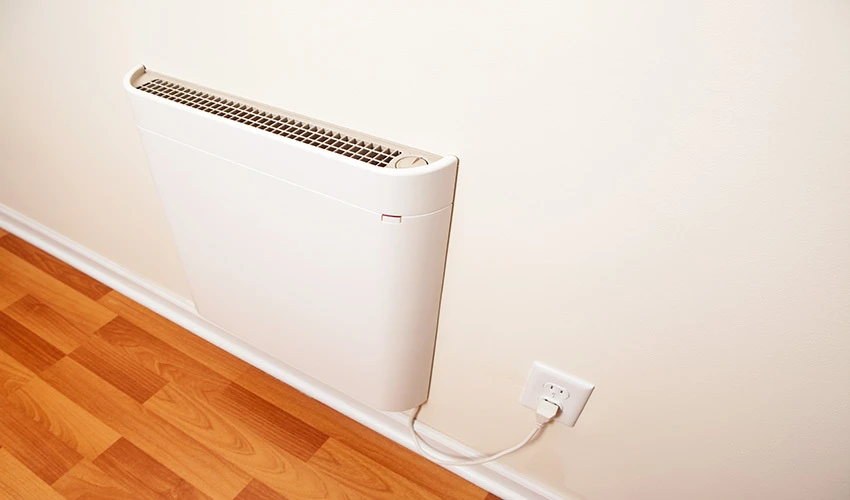
Last updated: 11/28/2023
There’s more than one way to heat a home! In fact, there are two main types of heating: convection and radiant. You’re probably more familiar with the applications of these heater and furnace types than you realize. If you’ve ever warmed your feet on a radiant floor or relaxed in a room heated by a furnace, you’ve benefitted directly from these heating systems.
Read on as we compare convection heaters vs radiant heaters. Let our HVAC professionals answer your convection heater questions and more!
What Exactly Is a Convection Heater?
A convection heater is a type of heater that utilizes convection to transfer heat via the movement of liquid or gas. A convection heater works much like a convection oven and differs from radiant or conduction heating, as it relies on the movement of air. In the context of central heating, it functions by warming a room from the top down. It relies on the properties of air to rise when it is warm and fall when it cools.
Conduction heating and radiant heating differ from convection heating:
Conduction Heating
This form of heat transfer functions by direct contact and physical transfer of heat from the heat source to the intended object. While this is the most efficient form of heat transfer (with a suitable medium), it is not a viable source for heating a dwelling.
Radiant Heating
This form of transfer relies upon radiation to heat a surface, rather than the air between the source and the surface. The heat source heats up the surface area of objects within an environment, which subsequently heats up and radiates heat as well. An example is the heat given off and then absorbed from a wood stove.
Convection Heater vs. Radiant Heater—What’s Better?
While both convection and radiant heaters are suitable methods for heating a dwelling, each has its own advantages and disadvantages.
Here are some of the benefits and drawbacks of convection versus radiant heat:
Convection Heating Pros
- Convection heaters will warm a room evenly as the air rises and falls uniformly within the space.
- These heaters can be mounted in unique spaces such as up high or at the base of stairways, allowing for more versatile ways to heat an environment.
- In most instances, convection heaters are relatively silent, as they do not rely on ductwork to provide heat.
Convection Heating Cons
- Convection heaters are not particularly effective for heating large spaces, as they function on dispersing the air in a space naturally.
- Since air does not circulate through a filter, convection heaters can result in an excessive accumulation of dust and allergens.
Radiant Heating Pros
- Radiant heat has a greater “flux” output than convection, meaning it takes less energy and time to heat a space.
- Objects within a radiant heat environment will retain heat better than the air in a space on which convection heat relies.
- Radiant heat systems such as those installed in the floors are easy to install and require little maintenance.
Radiant Heating Cons
- Some radiant heating systems such as in-floor heating can be difficult to install or retrofit to existing floors.
- Depending on the amount of area and system installed, radiant heating can have a substantial upfront investment cost.
Which Should I Choose: Convection Heater vs. Radiant Heaters
The choice between a convection or radiant heating system is personal and will depend on several factors including the age of your home, the location of the home and the needs of your household. In many cases, both radiant and convection heating sources may be used in tandem! For example, a radiant system may be supplemented by a convection-powered space heater.
Not sure which heating system is right for your home? Reach out to the experts at Aire Serv® today to discuss your heater repair and installation options! Call or request an appointment online and let our local technicians meet all your HVAC needs.

